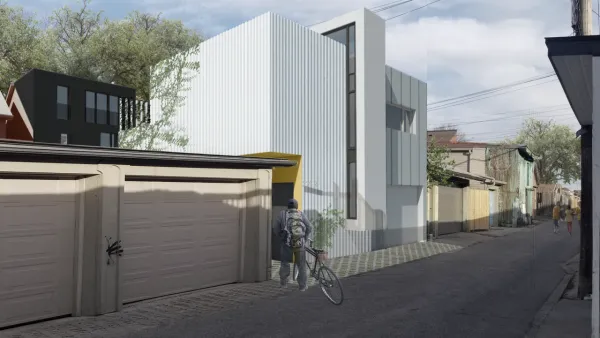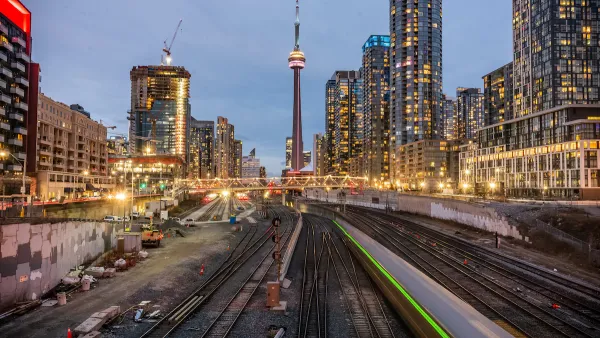A decade ago, a landmark study proposed alley-side infill development, or laneway housing, as a way to provide Toronto with thousands of affordable units. Despite significant obstacles, some developers and architects remain committed to the idea.
Alex Nino Gheciu examines how what was once seen as a promising concept for elegantly adding density to existing neighborhoods in Toronto at an offordable price point has been stymied by "zoning restrictions, lack of infrastructure and narrow back alleys that were never designed for homes." Despite such obstacles, the attraction of the housing type, which has proven popular in other cities such as Vancouver, still has adherents in architecture and development circles.
"A landmark 2003 study by architects Terence Van Elslander and Jeffrey Stinson found that Toronto’s laneways could house around 6,150 new homes. What’s more, they said, those homes could be built on the cheap — $100,000 each — without altering the streetscape of neighbourhoods, as they could be built on existing infrastructure."
"Nowadays, Van Elslander is a lot more cynical. A stricter approval process has made building a laneway house in Toronto 'an impossibility,' he says. Years can be spent seeking consent for the projects from various municipal departments. Meanwhile, getting the alleys serviced can cost 'tens of thousands of dollars.'"
"While Van Elsander’s study championed tiny laneway houses as an unrealized source of affordable housing in Toronto, it’s often only those with the time and money to meet the technical requirements who wind up living in them."
FULL STORY: Can living in laneways fix Toronto’s density issues?

National Parks Layoffs Will Cause Communities to Lose Billions
Thousands of essential park workers were laid off this week, just before the busy spring break season.

Retro-silient?: America’s First “Eco-burb,” The Woodlands Turns 50
A master-planned community north of Houston offers lessons on green infrastructure and resilient design, but falls short of its founder’s lofty affordability and walkability goals.

Delivering for America Plan Will Downgrade Mail Service in at Least 49.5 Percent of Zip Codes
Republican and Democrat lawmakers criticize the plan for its disproportionate negative impact on rural communities.

Test News Post 1
This is a summary

Test News Headline 46
Test for the image on the front page.

Balancing Bombs and Butterflies: How the National Guard Protects a Rare Species
The National Guard at Fort Indiantown Gap uses GIS technology and land management strategies to balance military training with conservation efforts, ensuring the survival of the rare eastern regal fritillary butterfly.
Urban Design for Planners 1: Software Tools
This six-course series explores essential urban design concepts using open source software and equips planners with the tools they need to participate fully in the urban design process.
Planning for Universal Design
Learn the tools for implementing Universal Design in planning regulations.
EMC Planning Group, Inc.
Planetizen
Planetizen
Mpact (formerly Rail~Volution)
Great Falls Development Authority, Inc.
HUDs Office of Policy Development and Research
NYU Wagner Graduate School of Public Service





























